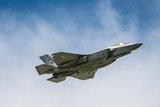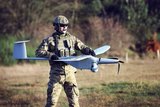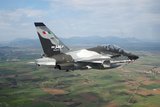Lockheed beats out Northrop on $17 billion US missile contract
The US intended to procure 20 Next Generation Interceptors (NGI). (Photo: Lockheed Martin)
The US Missile Defense Agency (MDA) has selected Lockheed Martin to deliver the new homeland missile defence capability.
The US$17 billion multi-year missile contract will cover the development of the Next Generation Interceptor (NGI) to modernise the Ground-Based Midcourse Defense (GMD) programme. The primary role of the multiple-kill vehicle interceptor and radars will be to protect the US against long-range ballistic missile threats.
The first interceptor was expected to be operational in 2028.
“We are committed to delivering reliable interceptors that will seamlessly integrate with the GMD system and can rapidly evolve with the threat,” said Sarah Hiza, VP and GM of strategic and missile defence at Lockheed Martin.
As recently as last week, Lit Gen Heath Collins, head of the MDA, revealed that the NGI was advancing through the technology development phase and was set to transition to product development in May.
The US intended to procure 20 interceptors and station them at Fort Greely, Alaska. Collins indicated that the agency would choose between Lockheed Martin and Northrop Grumman for the programme, both of which were awarded contracts in 2021 to develop designs.
Northrop Grumman and its partner company, Raytheon, successfully completed the All-Up Round (AUR) Preliminary Design Review (PDR) of its NGI offering in February this year. Lockheed Martin, for its part, said to have executed its digital AUR PDR review on September 29 last year.
After expending $1.2 billion on a contract with Boeing for a kill vehicle in 2019, the Pentagon terminated the project due to technical design issues. Subsequently, the US rebooted the contract process to solicit bids for the entire interceptor system. Boeing was excluded from the competition in 2021.
Government estimates projected the NIG programme to be valued at approximately $17.7 billion over its lifespan.
More from Air Warfare
-
![Portugal signals interest in establishing A-29N final assembly line]()
Portugal signals interest in establishing A-29N final assembly line
As the launch customer for the NATO-configured variant, Portugal also took delivery of the first five A-29N aircraft from its order for 12, placed in 2024.
-
![Podcast: Critical Care episode 5 - Sustaining Europe’s frontline from Heidelberg]()
Podcast: Critical Care episode 5 - Sustaining Europe’s frontline from Heidelberg
As Europe ramps up defence investment in the wake of the Ukraine crisis, the spotlight is turning to how nations sustain their growing fleets.
-
![Leonardo signs contract on Austria’s M-346 aircraft order]()
Leonardo signs contract on Austria’s M-346 aircraft order
The first of the 12 M-346 aircraft are expected to be delivered to the Austrian Air Force by 2028, according to the company.






















